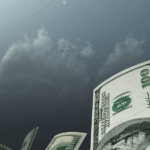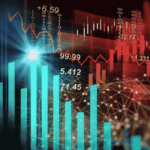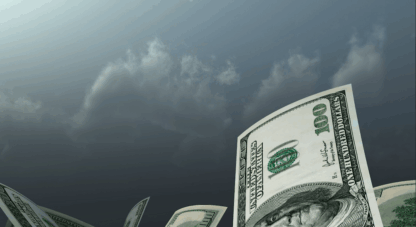It’s probably no coincidence that one of the most significant movies of the past 10 years is titled La La Land. This author couldn’t sit through more than the first five minutes of the movie, so will not make any comparison beyond the title. But the title—that’s where we are!
If we were to put our current condition in common parlance, we’d say we’re reality challenged. Other movies prove the point in depth. Some of the most popular are about superheroes, fantasy planets, animated gravity-defying martial artists, non-animated gravity-defying martial artists, single 110-pound women who can defeat thirty 180-pound fighting men, spies or soldiers or assassins who can kill 200 enemy soldiers without getting a scratch, and the list goes on. But of course the language in these movies gets progressively more salty in the name of—you guessed it—realism. Who comes up with this stuff?
Meanwhile, back here in the real la la land, we have men who think they’re women, women who think they’re men, kids who think they’re cats, politicians who think communism works, people who think America’s debt doesn’t matter, people who think correction is hateful, people who think the government earns money, people who think prison rehabilitates criminals—and that list goes on, too. Almost infinitely it seems.
People who scoff at the concept of a God who created the universe ex nihilo (out of nothing) with merely the command to come into existence exercise the same power themselves—or at least assert that they do. “I’m a woman,” says a male boxer, which gives him official sanction to beat up women and shower with them afterwards—and get a medal for it. He has created a woman out of a man—not quite ex nihilo, and using much more than a rib, but actuated by nothing more than a command. Or so he contends.
But the unreality extends far beyond the woke. Our Federal Reserve System has been creating currency (dollars) ex nihilo for over a century. Most of the world considers it a safe way to preserve wealth, though it is backed only by faith in the US government. The fact that the dollar has lost over 99% of its purchasing power as measured in gold (the previous currency of the US) tells us what US government backing is worth. Still, the dollar is very widely regarded as a safe place to store value. (And just in case you were wondering, gold still buys what it did in 1913 when the Fed came into existence.)
On the plus side of the ledger (where we tend to spend most of our personal time) there are still millions of sane and delightful people in America. We’re privileged to know and work with tens of thousands of them. And though we discuss the insanity that has taken hold of our country, we do it to warn of danger and help steer things back to real. In the meantime, we hope to help you build a lifeboat in case the good ship USA-as-We-Know-It joins the RMS Titanic in swimming with the fishes. The publications below can give you some insight into that process.
Key Takeaways:
- Perception matters; so does reality
- There’s money—and then there’s money
- The gold market is strong and getting stronger
- When discussing recession, use the present tense
The McAlvany Weekly Commentary: Markets & Politics Propelled By “Joy”
With Nvidia improving its market cap by $3 trillion in 21 months, David and Kevin take a step back and discuss value. Any asset’s value is a function of both its absolute value and its relative value (or true and perceived—or book and market—value). Both are critical, and only an inexperienced or poor investor ignores either. Warren Buffet is famous for buying stocks when their relative (market) value is far below their absolute (book) value. And the aphorism that “the market can remain irrational longer than you can remain solvent” touches on this same truth from the other direction. Prices (market values) can remain irrational far longer than hopeful believers in reality can wait for them to correct. We’ve seen exactly this truth play out this year in extremis with the AI craze, and investing has largely become a game of chicken between the trend and the truth. (Spoiler alert: even though it can take an inordinately long time to do so, truth always wins.) Nvidia shares are selling at a price to sales multiple of over 40 times, which David calls a “mark to absurdity.” But this is not an isolated instance. “A Bank of America study shows 78% correlation between Nvidia shares and the wider market price action.” In contrast to stocks, gold’s true value remains high and constant. Its perceived value fluctuates widely with investor emotions, and can suffer when greed is in full flower. But when emotions turn from greed to fear, gold’s price starts heading upward. In case you weren’t sure, that’s where we are. Strong hands are turning to gold even as weak hands continue to hang onto or pour into AI and the Mag Seven. The details in this discussion are fascinating. Don’t miss it.
Credit Bubble Bulletin: Money Machines
Doug often presents a curated news feed of high-level analysis by some of the most incisive thinkers in markets today, interspersed with his own penetrating analysis. This week, however, the analysis is all his. He explains where money for markets comes from, dispelling the overwhelmingly common belief that it all comes from banks (including the Fed). This provides further explanation for the loose financial conditions that have prevailed even as the Fed has been raising interest rates and reducing its balance sheet. But not all money is equal. Bubbles in certain monetary instruments, such as junk bonds and higher risk credit, are self-correcting, but not bubbles created by the perceived good stuff—mainstream money from the Fed. “Unlike junk, ‘money’ essentially enjoys insatiable demand. As such, a Bubble fueled by perceived safe and liquid money-like debt instruments, left unchecked, will inflate over many years and leave a legacy of deep systemic distortions and maladjustment.” Of course, this is not theoretical. We’re there. And in that light, “‘dovish pivots’ and rate cut signaling are dangerous business in an environment of aggressive levered speculation and enterprising ‘basis trade’ operators. These ‘Money Machines’ are showering Bubble markets and segments of our maladjusted economy with liquidity excess. Financial conditions remain excessively loose, boosting the odds of upside economic and inflation surprises. They’re ‘Terminal Phase’ phenomena, specifically because aggressive speculative leveraging extends late boom cycle excess, sowing the seeds for an especially destabilizing de-risking/deleveraging.”
Hard Asset Insights: Just the Start
Morgan does a deep dive on gold this week, citing the macro factors affecting its price and prospects. “HAI sees three specific drivers to watch right now in the gold market. Central bank demand—mostly from emerging markets and the People’s Bank of China—Chinese citizen domestic buying, and finally the participation of the Western investor.” Central banks and Chinese investors are already buying hand over fist. Late to the party is the Western investor, but that’s starting to change. Morgan takes some time to carefully document the extent and rate of gold buying in these three sectors, making clear the immense force behind gold purchases and the upward momentum in its price. “As demonstrated by outflows from US and European gold exchange traded funds, the message is clear: emerging market central banks, BRICS nations, and Eastern investors have taken control of the gold price as an energetic block of strong and consistent buyers.” Still, gold mining stocks and gold ETF funds—both dominated by Western investors—are starting to show some life. This third category of buyer is where the future of gold will be determined. Already, with only two of these three powerful sectors buying vigorously, gold is setting one all-time high price record after another. As Westerners get the memo, gold stands to do very well. “In short, whether it’s monetary and fiscal malpractice or the weaponization of the dollar, once East meets West in agreement on the need to buy gold, HAI expects the current bull market to get bigger—a whole lot bigger.”
Golden Rule Radio: The Recession May Already Be Here
Miles kicks things off with a review of the charts for the week. Most of the assets typically viewed in this space were flat for the week, platinum being the only significant exception, though it was down only 3%. The other three precious metals, the Dow, the S&P, and the dollar ended the week pretty much where they began it. From there, the hosts (including Tory and Rob) discuss the economy overall and the recessionary indicators that are flashing. There are several, and they’re significant. The Sahm Rule is one, and five others point the same direction. Miles then turns to the dollar for some focused analysis, and shows that it has been range-bound for a couple of years, but is likely to be affected by Fed plans to reduce interest rates. In fact, the change in the dollar is likely to be a longer-term development due to the likelihood that interest rates won’t return to their former low levels. Related to these matters, the question Miles hears most frequently these days is related to the BRIICS nations, and whether they will introduce a gold-backed currency for settling accounts between them. That kind of backing would be the only way these countries (Brazil, Russia, India, Iran, China, South Africa) would be able to trust each other’s currencies. The hosts also discuss ongoing CPI hijinks and employment numbers, concluding that we are indeed close to recession, if not already in it.















